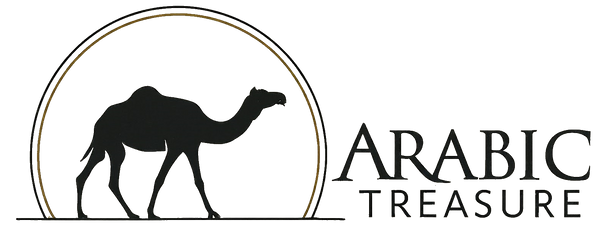History Of The Keffiyeh
Beyond Black and White: A Journey Through the History of Arab Keffiyehs and Attire
The Arab world boasts a rich tapestry of cultures, each with its own distinct traditions and styles. One ubiquitous element that transcends regional boundaries is the keffiyeh, a checkered headscarf synonymous with Arab identity. But the keffiyeh's story goes far beyond its iconic black and white pattern. Let's embark on a journey through the history of Arab keffiyehs and traditional attire, exploring their evolution and enduring cultural significance.
From Humble Beginnings: The Origins of the Keffiyeh
The exact origin of the keffiyeh remains shrouded in some mystery, but historical evidence suggests its roots stretch back millennia. Archaeological finds depict figures in Mesopotamia (present-day Iraq) wearing head coverings strikingly similar to the keffiyeh as early as 3100 BC. Initially crafted from simple woven cloth, these early keffiyehs likely served a practical purpose – protecting wearers from the harsh desert sun and sand.
A Symbol of Resilience: The Keffiyeh's Rise in Popularity
Over centuries, the keffiyeh spread throughout the Arab world, evolving in style and significance. Traditionally, the keffiyeh's color and fabric varied depending on the region. In cooler climates, thicker wool was used, while desert dwellers favored lighter, more breathable fabrics. The black and white keffiyeh, now most commonly associated with Palestine, is believed to have emerged around the 19th century.
The 20th century saw the keffiyeh transcend its practical origins to become a powerful symbol. During the Arab Revolt against Ottoman rule in the early 1900s, the keffiyeh became a unifying symbol of Arab identity and resistance. Later, Palestinian leader Yasser Arafat's prominent use of the keffiyeh solidified its association with the Palestinian struggle for self-determination.
Beyond the Keffiyeh: Exploring Traditional Arab Attire
The keffiyeh is just one element of the diverse world of Arab clothing. Traditional attire varies greatly across the region, influenced by climate, cultural customs, and religious beliefs. Here's a glimpse into some iconic styles:
- Thobe: A long, loose garment typically worn by men, thobes come in various fabrics and styles depending on the region. In the Arabian Peninsula, white thobes are most common, while other regions may have colorful variations.
- Abaya: A long, flowing robe worn by women, the abaya offers a modest and practical form of dress. Abayas come in a wide range of styles and can be adorned with intricate embroidery or embellishments.
- Hijab: A headscarf worn by Muslim women, the hijab covers the head and neck. Hijab styles vary depending on personal preference and cultural norms.
A Legacy of Culture and Identity
Today, Arab keffiyehs and traditional attire continue to evolve, reflecting a blend of heritage and contemporary style. From streetwear incorporating keffiyeh patterns to modern reinterpretations of traditional garments, Arab fashion is experiencing a vibrant renaissance. But beyond trends, the keffiyeh and traditional attire remain potent symbols of cultural identity, resilience, and a rich heritage that continues to inspire generations.

